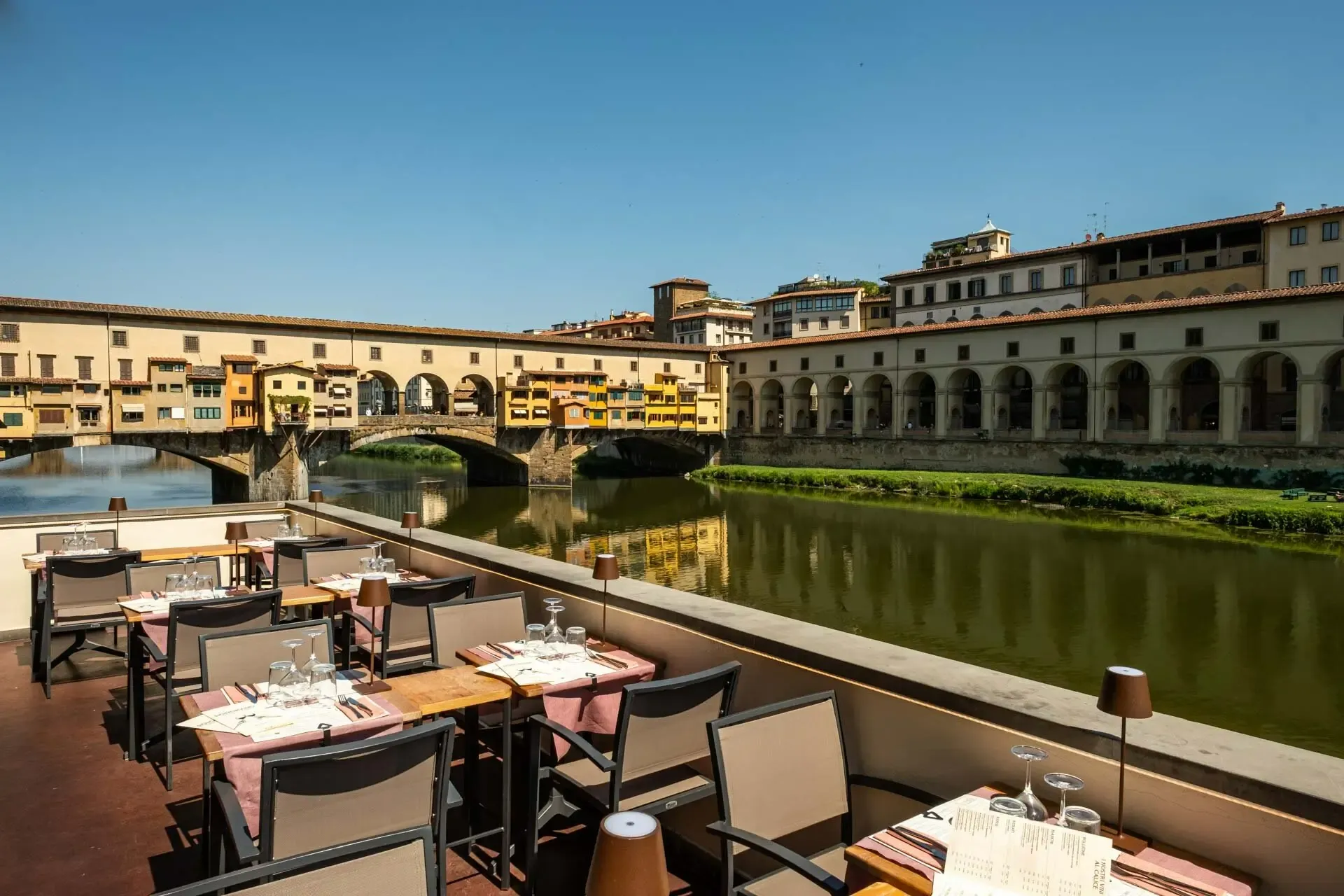
Dining Options at the Uffizi Gallery
Discover the best dining options within and near the Uffizi Gallery, from the museum café to nearby Florentine restaurants for a complete cultural experience.
→
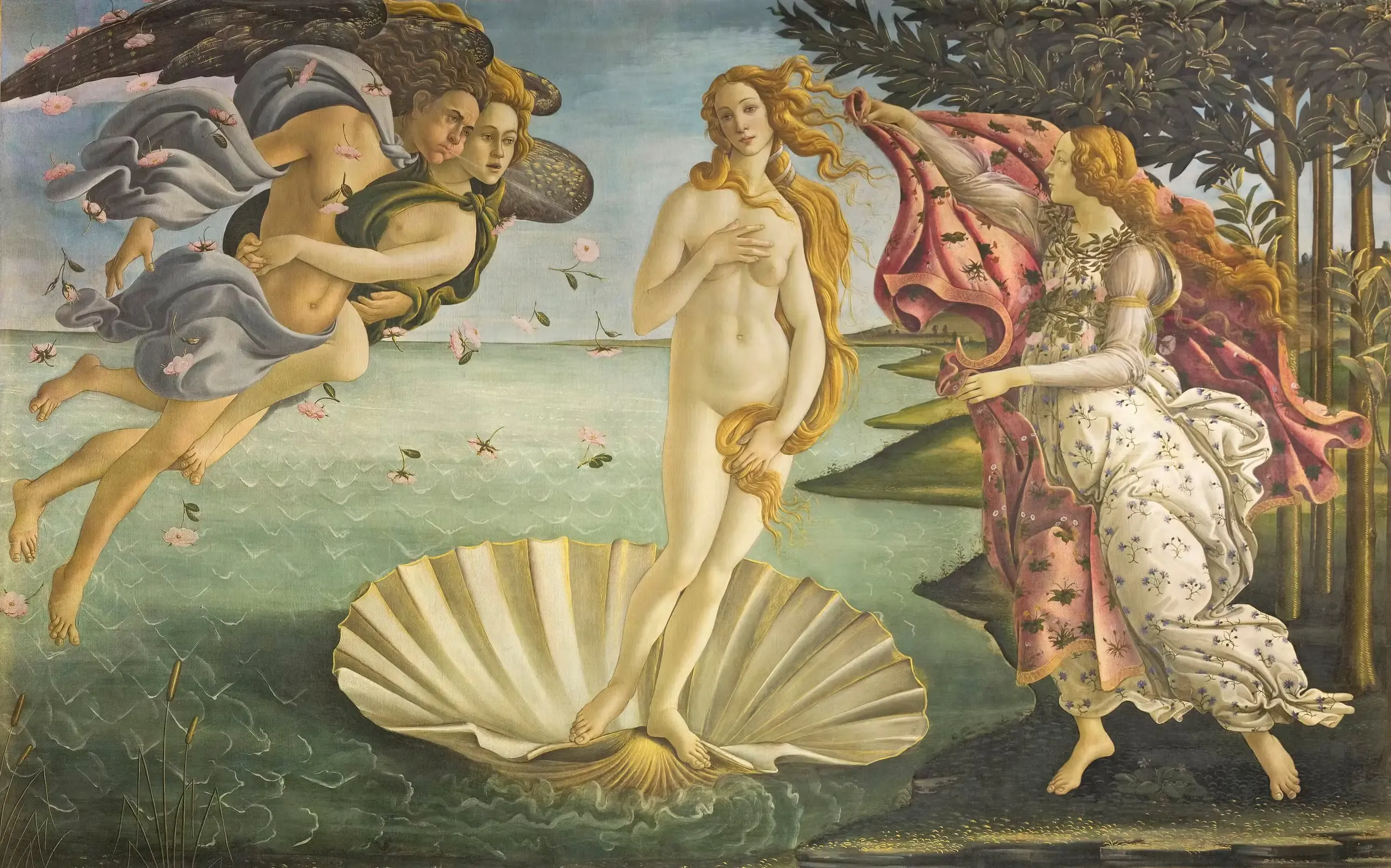
The Birth of Venus by Botticelli: A Renaissance Masterpiece
Discover the secrets and symbolism behind Botticelli's most famous painting, housed in the Uffizi Gallery.
→

Wheelchair Access and Accessibility at the Uffizi Gallery
Complete guide to wheelchair accessibility, facilities, and services available at the Uffizi Gallery for visitors with mobility needs.
→
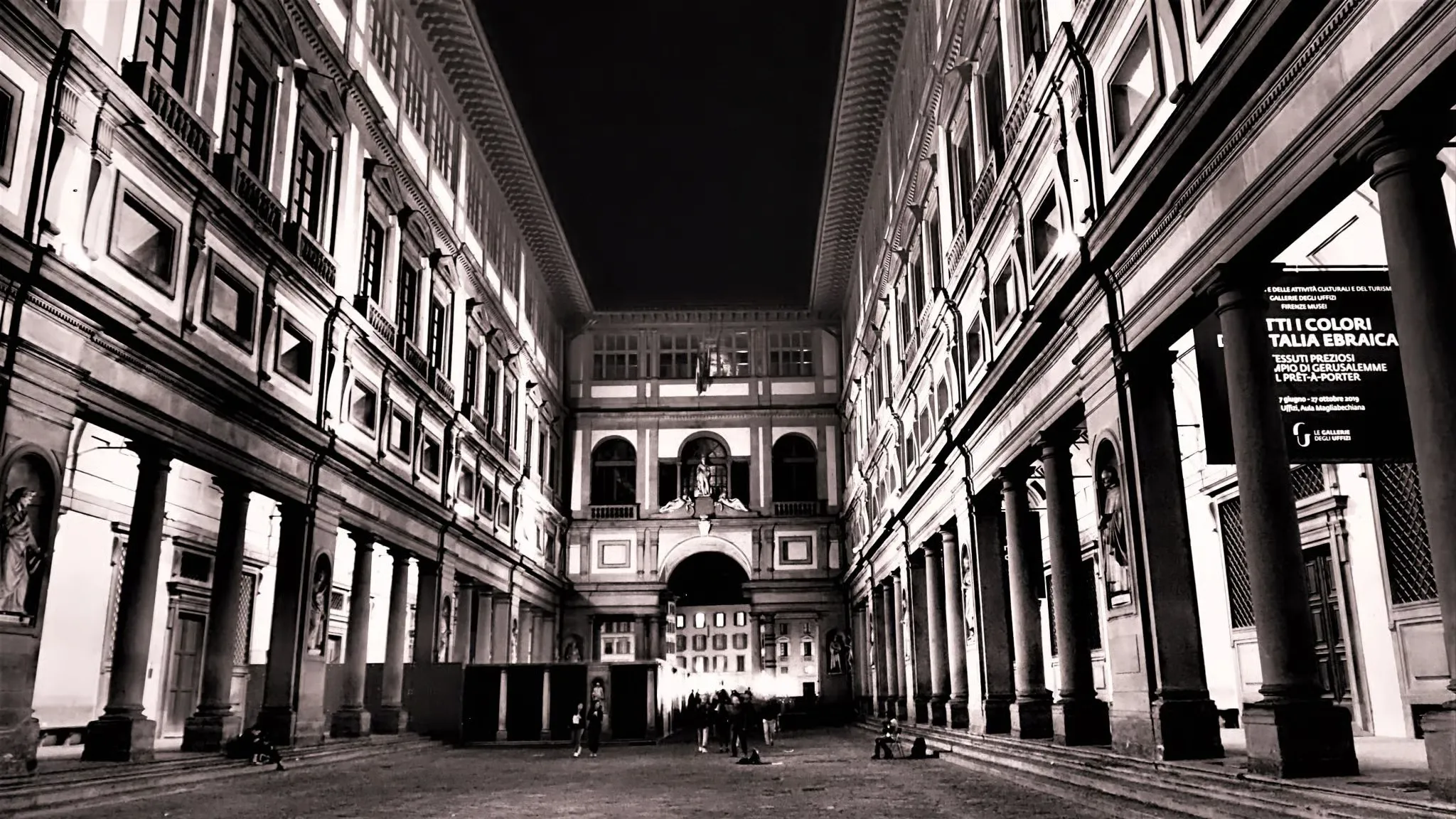
Photography Guidelines at the Uffizi Gallery
Complete guide to photography rules, permitted areas, and tips for capturing memories during your Uffizi Gallery visit while respecting artwork preservation.
→
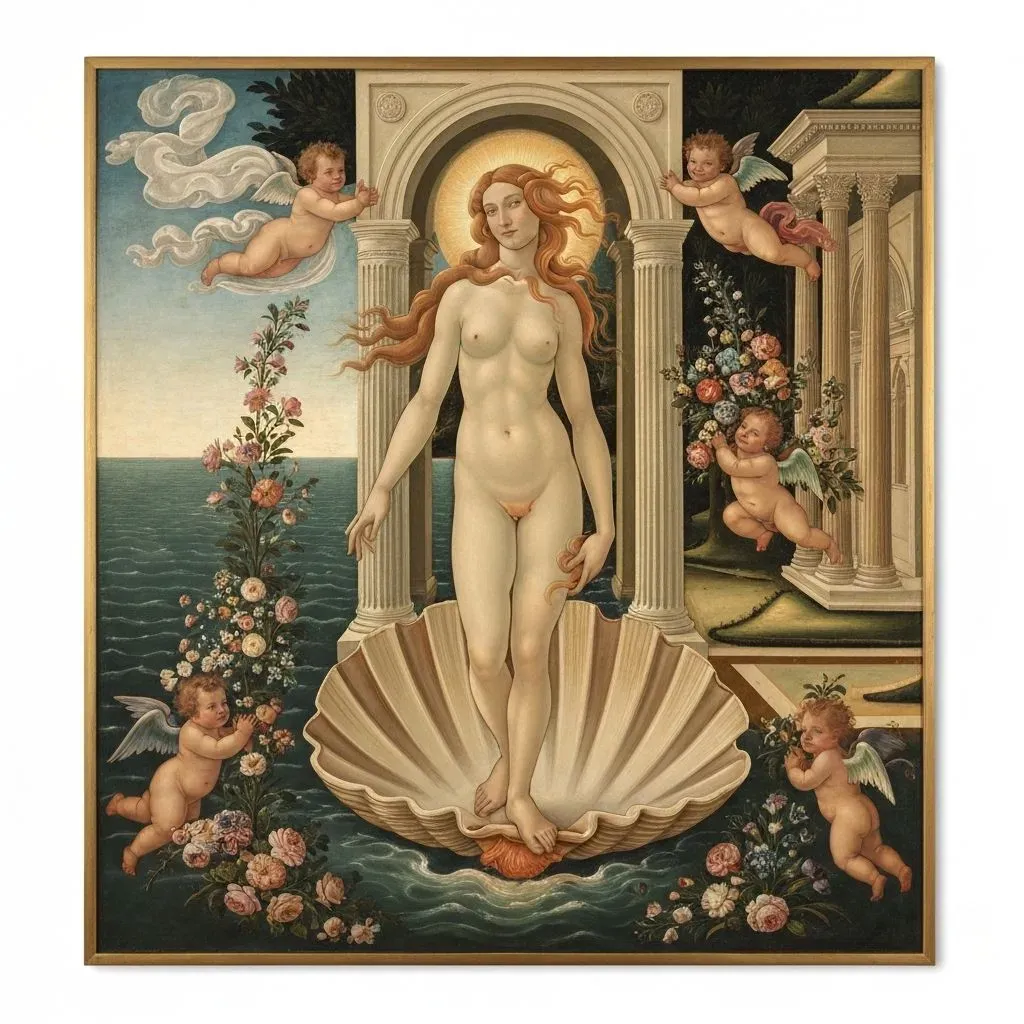
Is the Uffizi Gallery Worth Visiting? A Complete Guide
Discover why the Uffizi Gallery is considered one of the world's greatest art museums and whether it's worth your time and money to visit.
→
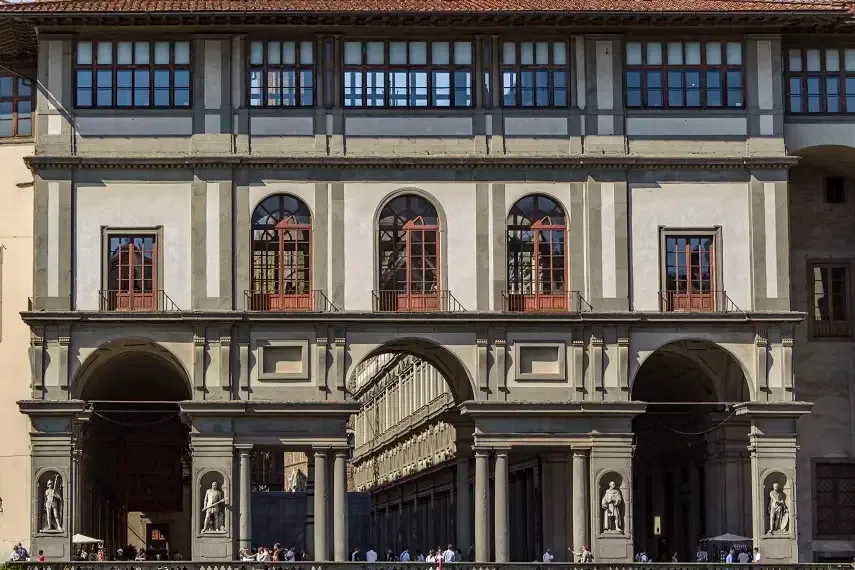
Complete Guide to Uffizi Gallery Tickets
Everything you need to know about buying Uffizi Gallery tickets, including prices, booking tips, and skip-the-line options.
→

How to Book Uffizi Gallery Tickets Online: Complete Guide
Learn how to book your Uffizi Gallery tickets online to skip the line, choose your preferred time, and make the most of your visit to Florence's world-famous art museum.
→
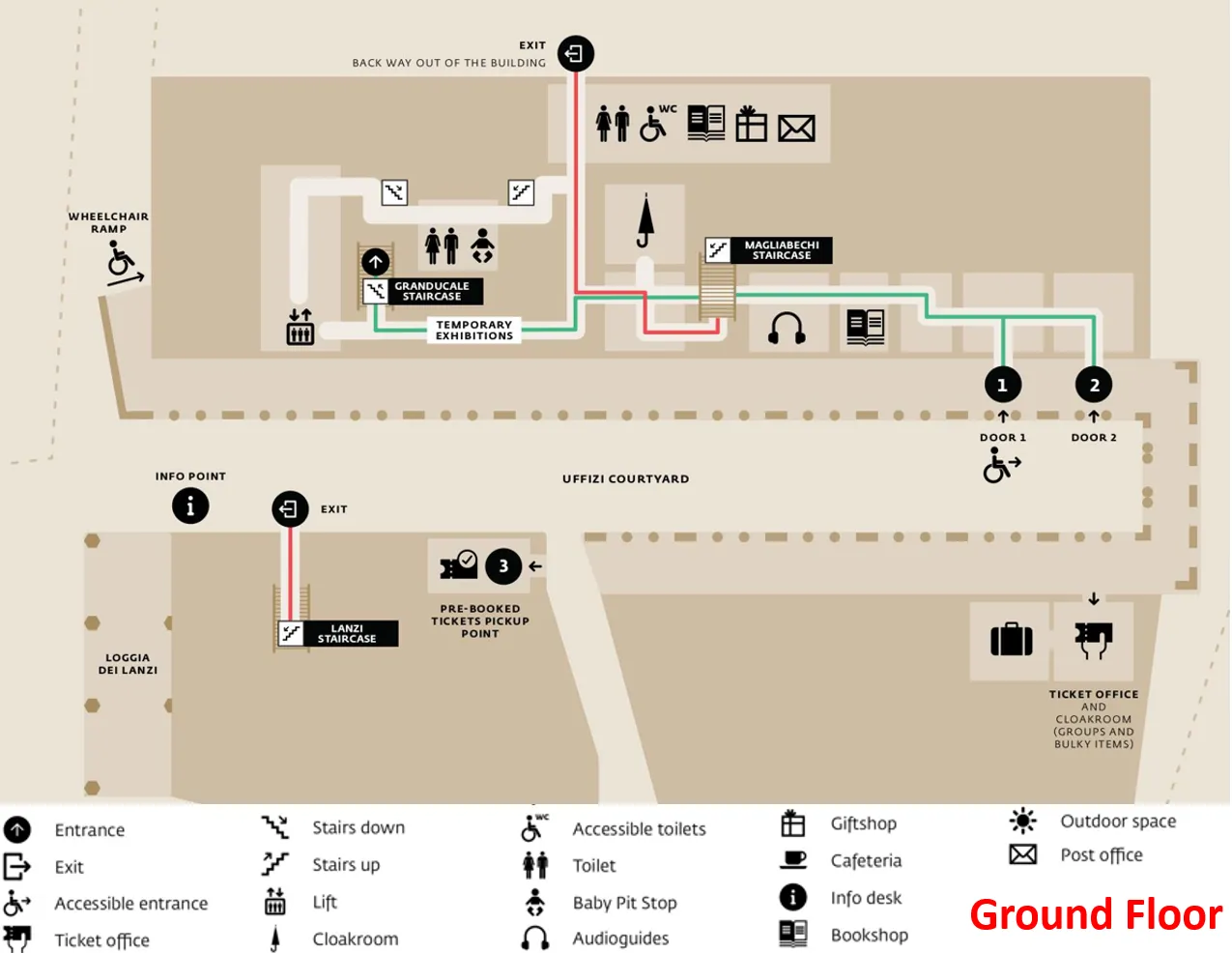
How Long Does It Take to Visit the Uffizi Gallery? Complete Time Guide
Plan your perfect Uffizi visit with our comprehensive guide to visit duration, from quick highlights tours to in-depth art exploration.
→
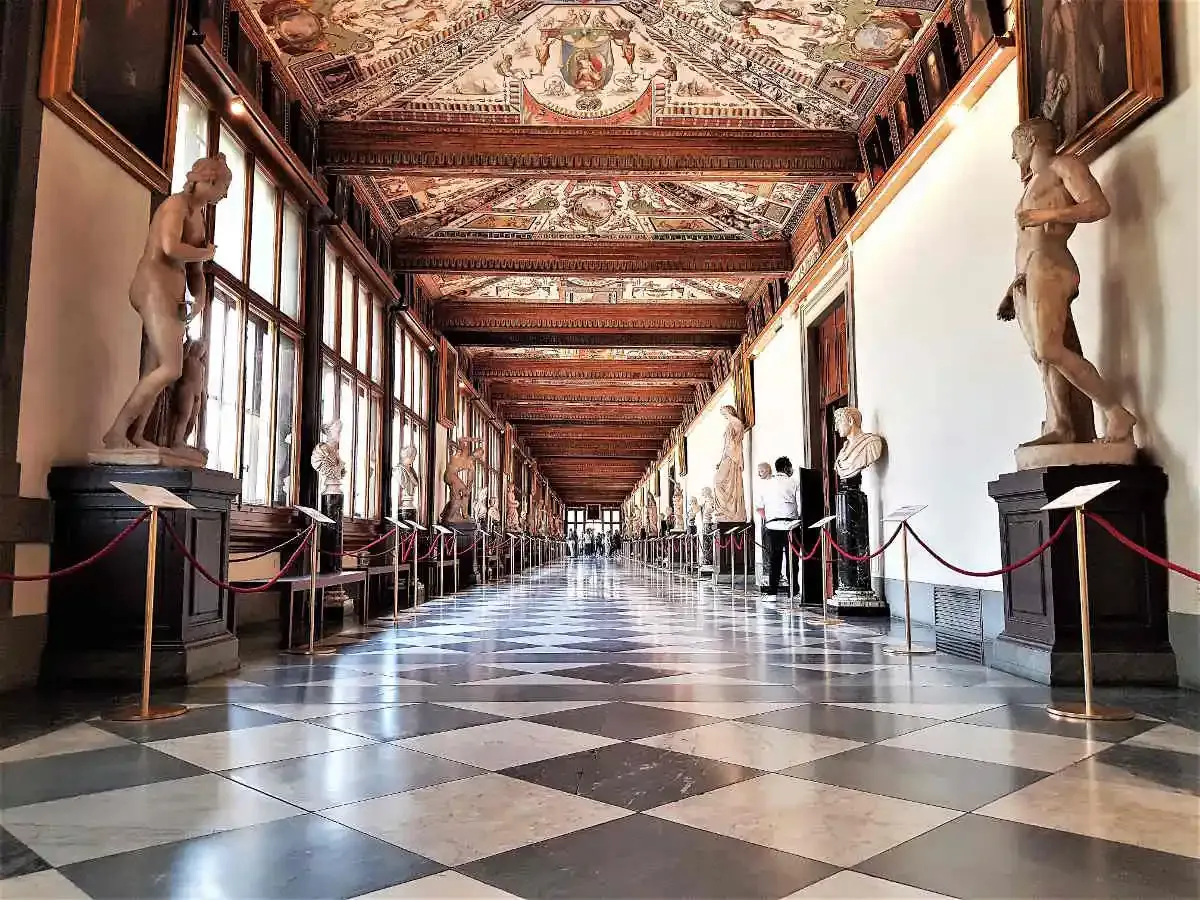
The Vasari Corridor: Secret Passage of the Medici
Explore the hidden corridor that connected the Uffizi to Palazzo Pitti, filled with self-portraits and history.
→

The Uffizi Loggia: Architectural Marvel of the Renaissance
Discover the architectural beauty of the Uffizi Loggia, designed by Giorgio Vasari as part of the original palace complex.
→
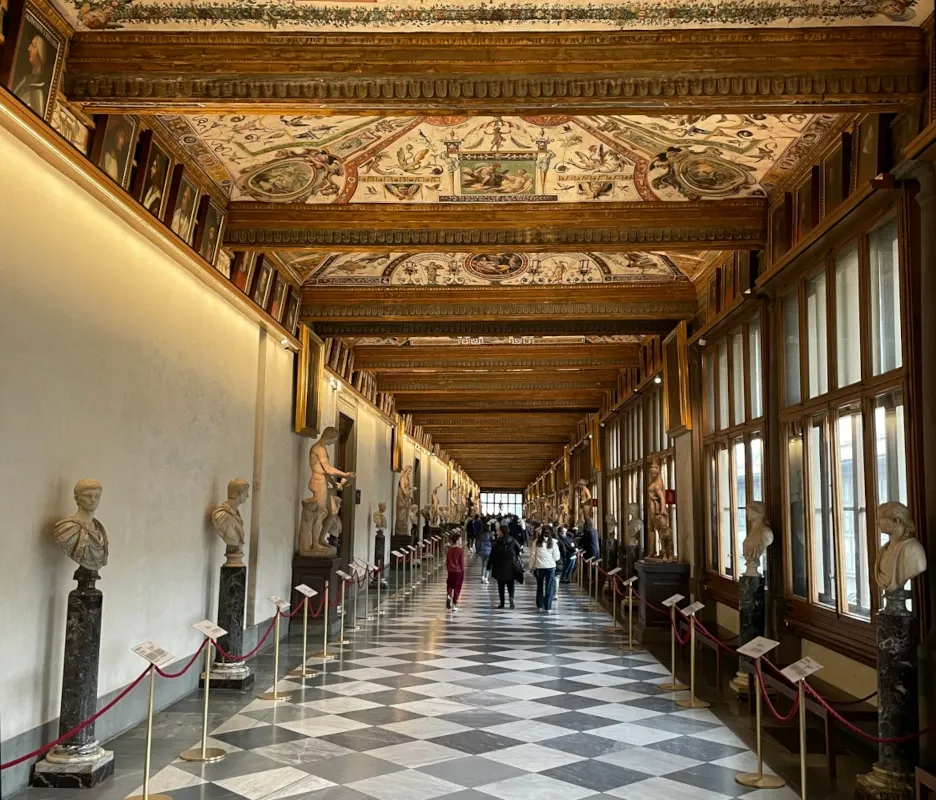
Corridoio Est: The Eastern Gallery's Artistic Treasures
Explore the Eastern Corridor of the Uffizi, home to an exceptional collection of ancient Roman sculptures, Renaissance portraits, and architectural marvels spanning centuries of artistic excellence.
→
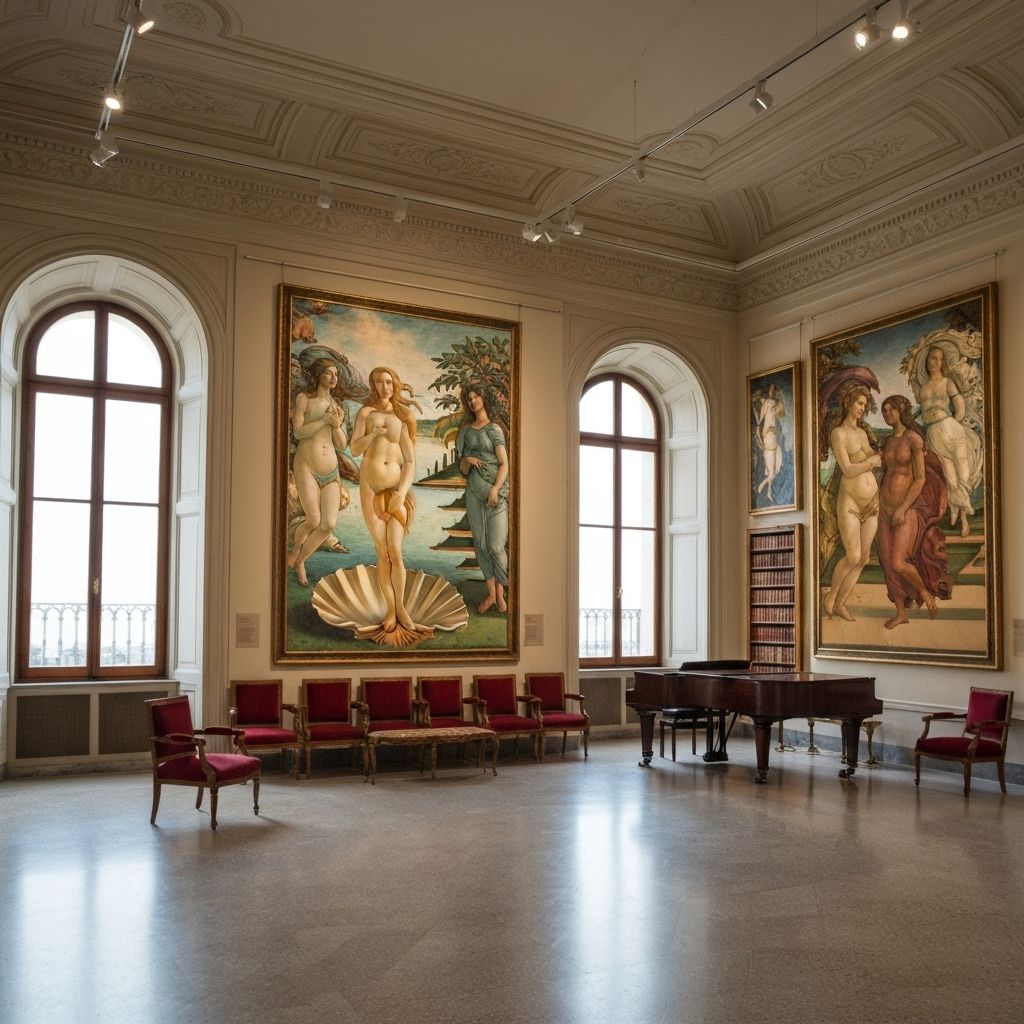
Sala del Botticelli: Renaissance Masterpieces Hall
Step into the legendary Botticelli Room at the Uffizi, home to 'The Birth of Venus' and 'Primavera' - two of the most celebrated Renaissance paintings that define artistic beauty and mythological storytelling.
→
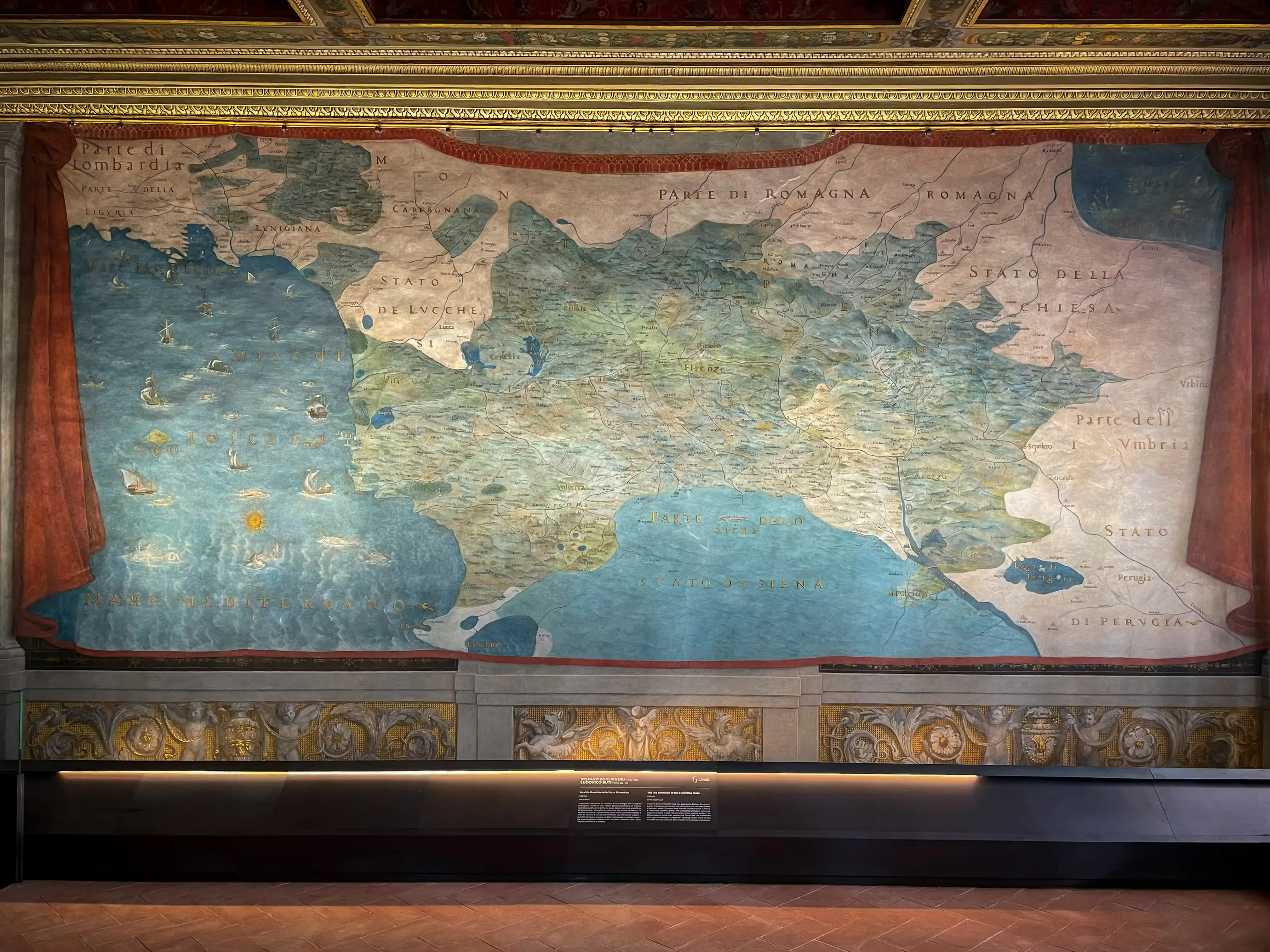
Sala delle Carte Geografiche: Renaissance Cartography Marvel
Discover the magnificent Hall of Geographic Maps at the Uffizi, featuring 16th-century cartographic masterpieces that showcase Renaissance geographical knowledge and artistic excellence.
→
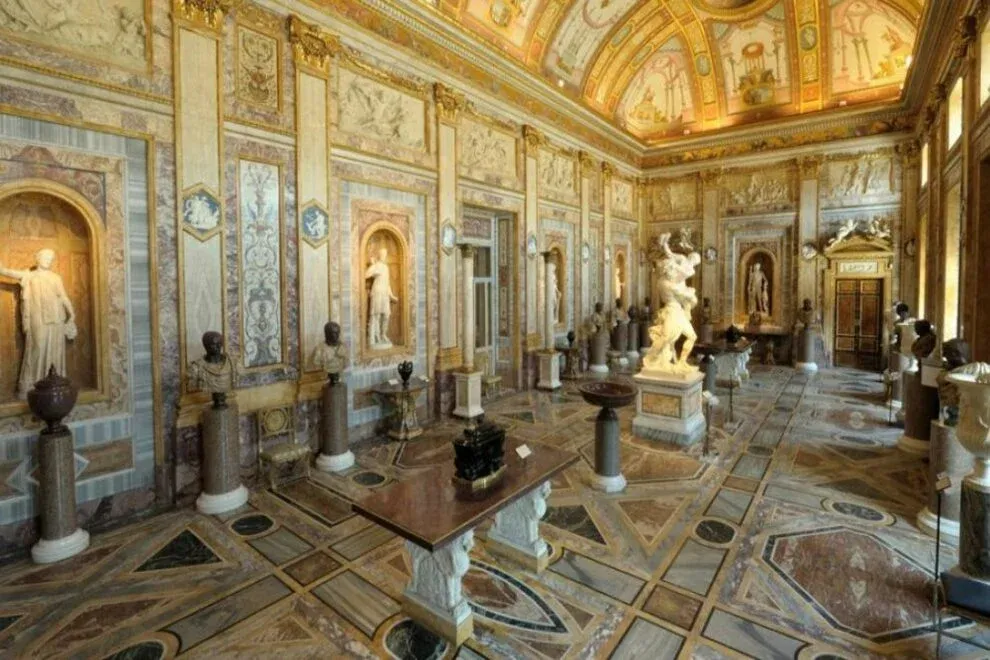
Sala di Leonardo: Genius of the Renaissance
Enter the Leonardo da Vinci room at the Uffizi, featuring the master's early works including the Annunciation and Adoration of the Magi, showcasing the evolution of Renaissance genius.
→

The Tribuna: Uffizi's Octagonal Jewel
Explore the magnificent Tribuna, the Uffizi's octagonal room designed to house the Medici's most precious treasures and artistic masterpieces.
→

The Birth of Venus by Botticelli: A Renaissance Masterpiece
Discover the secrets and symbolism behind Botticelli's most famous painting, housed in the Uffizi Gallery.
→
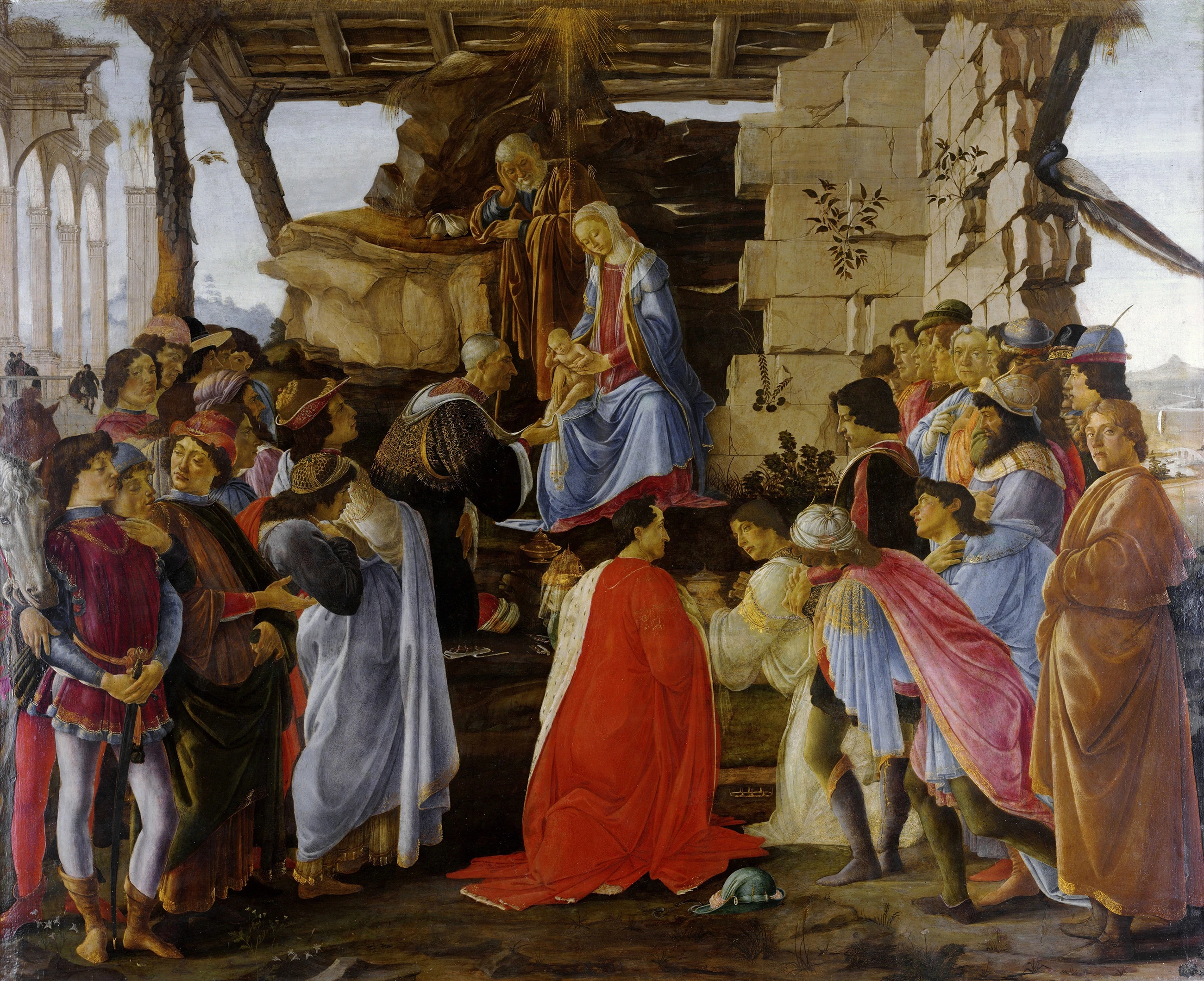
Adoration of the Magi by Botticelli: Power, Portraits, and Divine Homage
Uncover the symbolism, history, and politics behind Botticelli’s Adoration of the Magi at the Uffizi Gallery.
→
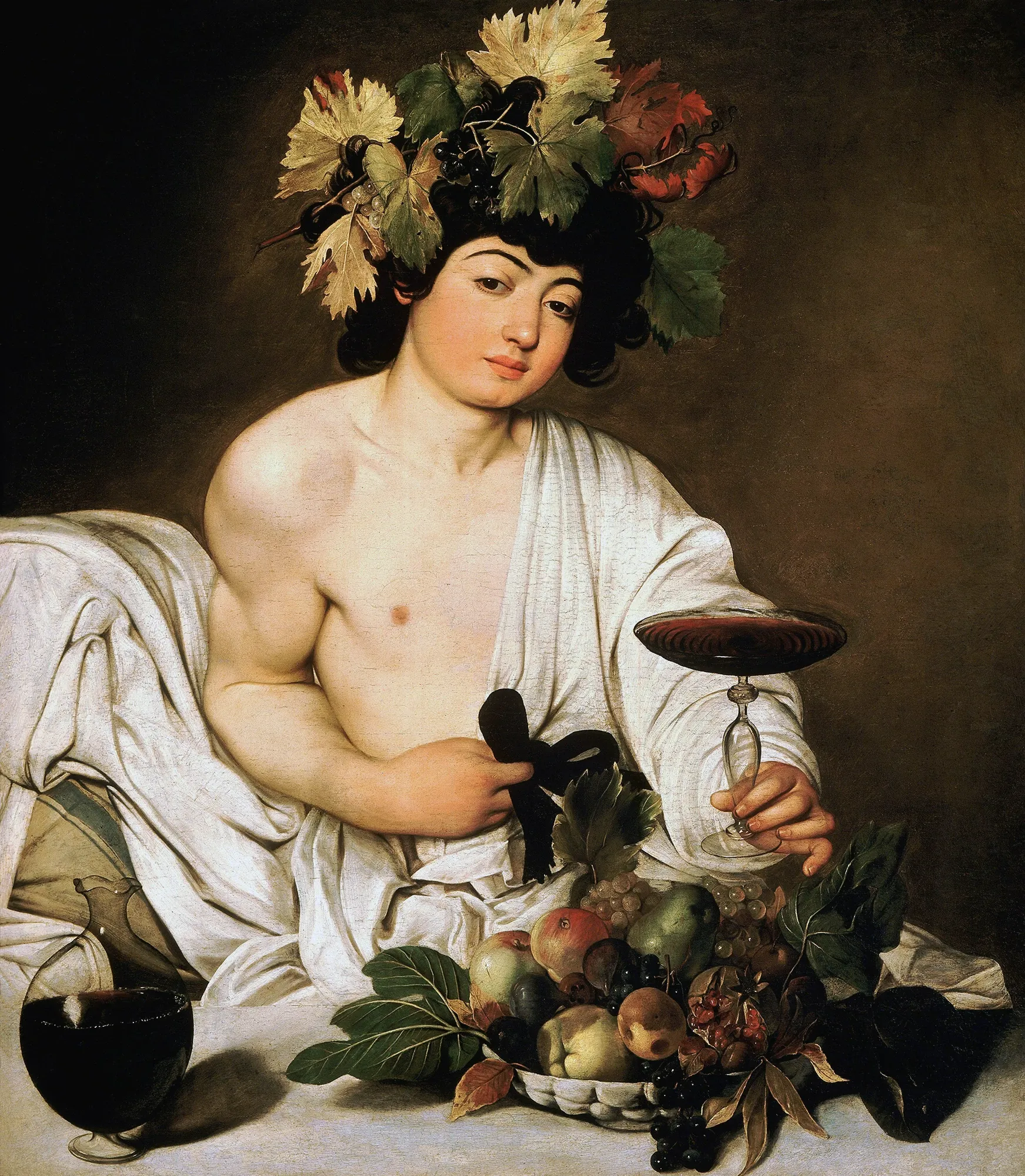
Caravaggio's Bacchus: A Masterpiece of Baroque Realism
Discover the revolutionary painting technique and hidden symbolism in Caravaggio's Bacchus, one of the Uffizi's most captivating baroque masterpieces.
→
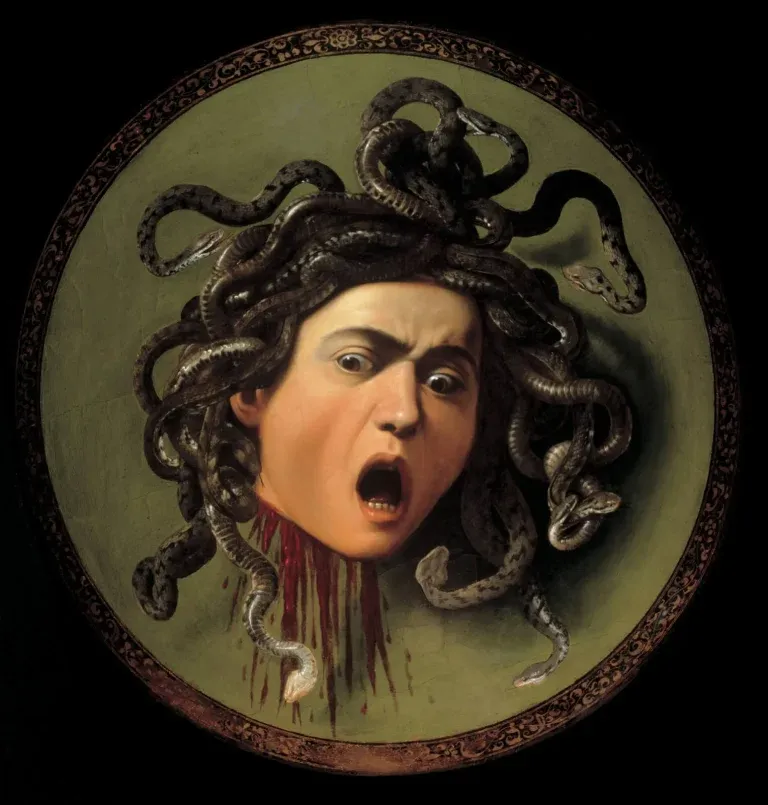
Medusa by Caravaggio: A Baroque Masterpiece of Terror and Beauty
Explore Caravaggio’s dramatic *Medusa*, a stunning shield painting of myth and power at the Uffizi Gallery.
→
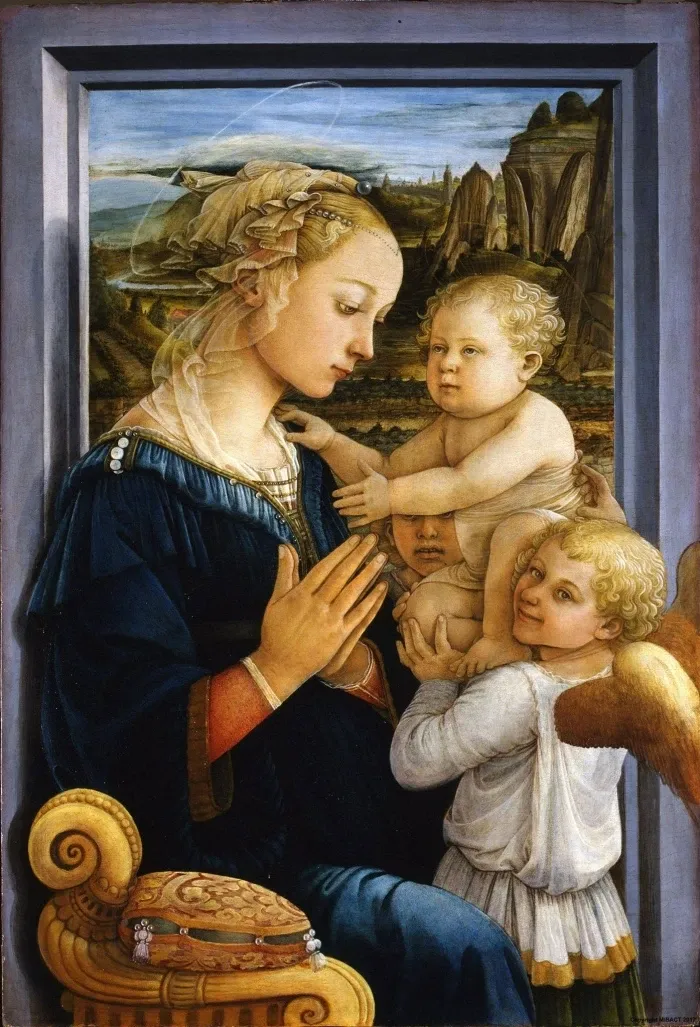
Madonna with the Child and Two Angels by Filippo Lippi: A Renaissance Treasure
Explore the beauty, symbolism, and history of Filippo Lippi’s tender masterpiece, displayed at the Uffizi Gallery in Florence.
→
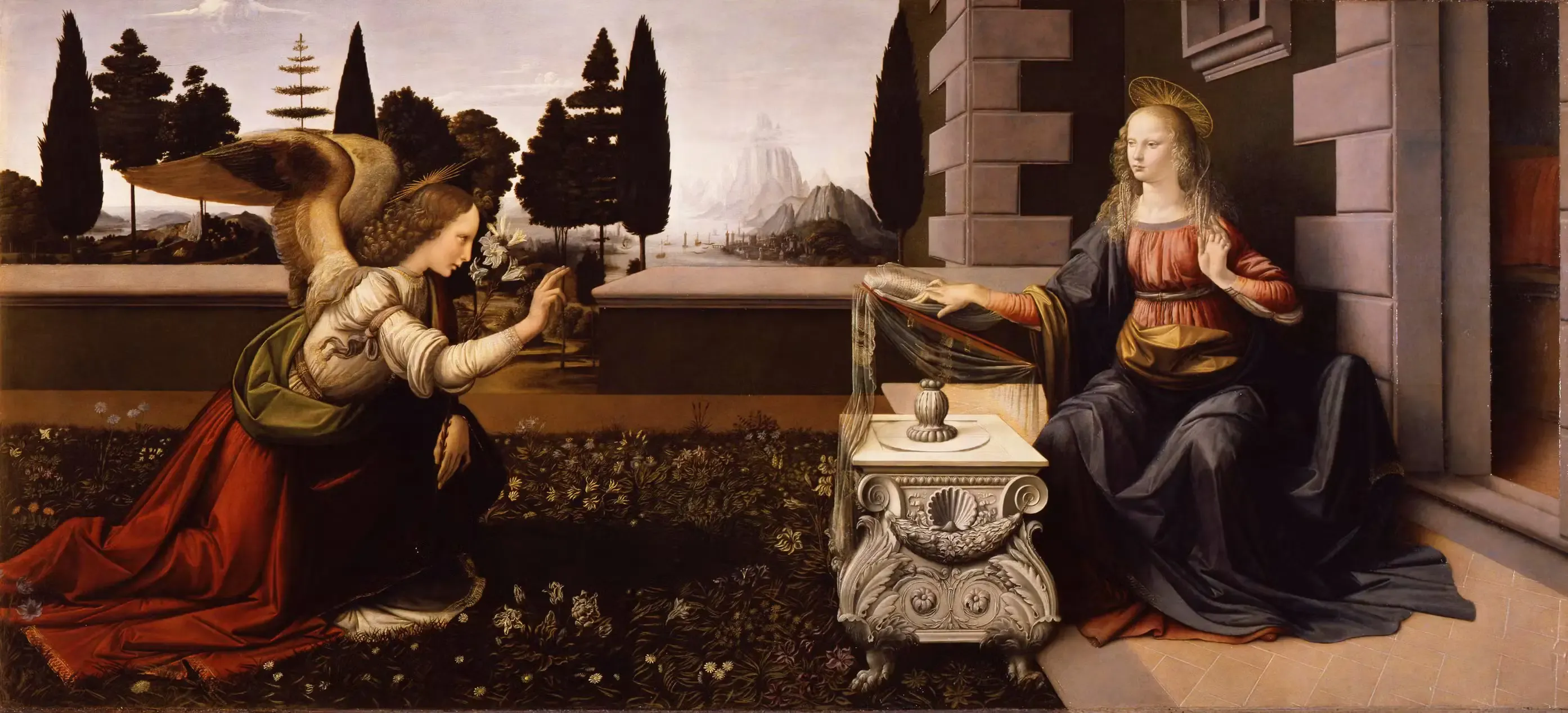
Leonardo da Vinci's Annunciation: A Masterpiece of Renaissance Art
Discover the beauty and symbolism of Leonardo da Vinci's Annunciation, one of the most celebrated paintings in the Uffizi Gallery.
→
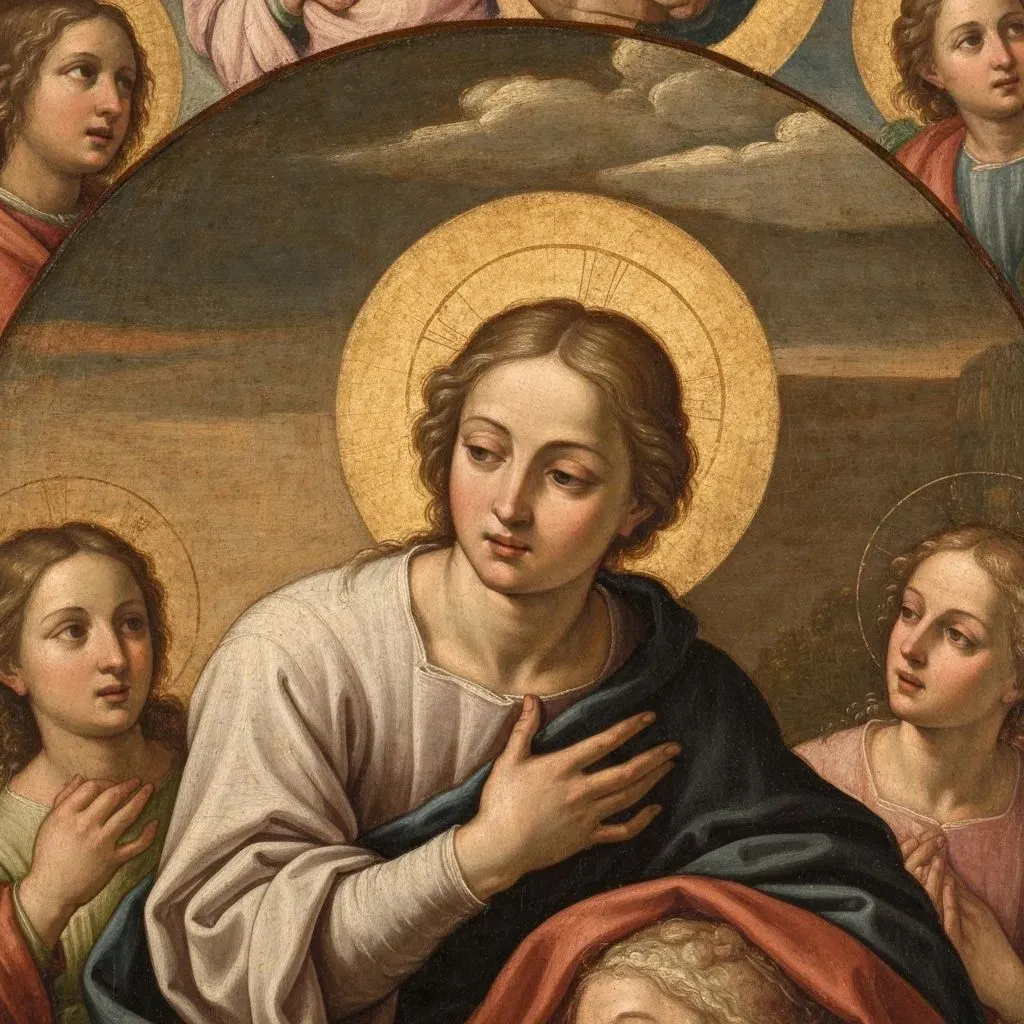
Michelangelo's Doni Tondo: The Only Panel Painting
Learn about Michelangelo's only finished panel painting, a circular masterpiece depicting the Holy Family.
→

The Medici Venus: Classical Beauty in Marble
Explore the Medici Venus, one of the most famous ancient Roman sculptures in the Uffizi Gallery's collection.
→

Uffizi Gallery Floor Maps & Layout Guide
Ground, first, and second floor maps of the Uffizi Gallery with details on what to see on each level.
→